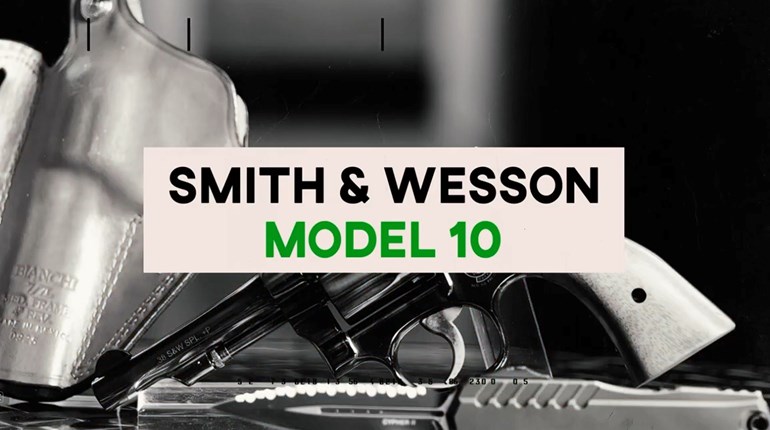
I’ve always been a fan of the 1911. My grandfather had a six-digit serial number Colt 1911 from 1917, complete with the U.S. GI leather pouch with steel belt clip, that I would gawk at pretty much every time I went to visit. Years later, after he passed on, I took possession of that 1911, and I’ve owned 1911s ever since. There’s no denying a bit of magic in the 1911 DNA, having served the U.S. Military over the span of eight decades and still being a perfectly decent home- and self-defense tool. While the TriStar American Classic II is, in fact, made in the Philippines, it follows the winning formula for the 1911 that has kept it popular for so long.
First, a little about the product line. There are two levels of American Classic 1911s from TriStar: The American Classic has a spur hammer, mil-spec sights and no front serrations; the American Classic II 1911 covered in this review features a Commander-style hammer, extended beavertail, front cocking serrations and Novak-style sights. Both versions are available in either blued or chrome-plated finish and have wooden grips. Another difference not readily apparent is the chambering: The Classic is available in 9 mm, .45 ACP and .38 Super, while the Classic II comes chambered in 9 mm, .45 ACP and 10 mm. It boils down to whether you want a mil-spec 1911 or one with a few upgrades.

The upgrades on the Classic II are excellent, and make the pistol even better-suited for personal defense—forward cocking serrations allow easier manipulation of the pistol for administrative press checks, while an extended beavertail helps guard against hammer bite, as does the Commander-style hammer. Sights are a much-needed improvement over the standard, mil-spec variants, with the Novak rear aperture and a dovetail-mounted front blade both sporting white dots. Should a different setup be desired, there are nearly limitless options from which to choose. Rounding out the carry-friendly upgrades are an enlarged slide-stop lever and thumb safety, allowing for more efficient administrative manipulation of the pistol.
When it comes to handling the American Classic II 1911, it all works, and works well. Whether it’s engaging or disengaging the thumb safety, releasing the slide via the slide-stop lever, dropping the magazine or engaging the grip safety, everything happens exactly the way it should. There’s no rattling, no extra force needed to move levers, nothing. It just plain works. For someone who cut his teeth on an original 1911, the lack of rattling was almost disconcerting—they’re supposed to make noise, right? That’s more of a testament to the number of rounds my grandfather shot through our vintage pistol than a condemnation of the 1911 platform, mind you. TriStar’s American Classic II continues that tradition in fine form.
There are, however, a couple areas that could use a bit of attention. First, the frontstrap is perfectly smooth. There’s no stippling or checkering to help keep it in the hand, and while the recoil of the .45 ACP—especially in an all-steel 1911—isn’t terrible, a little something where your fingers wrap around the grip is appreciated. Second, and this continues to puzzle me, is the single magazine included at purchase. Even at today’s prices, a quality Chip McCormick magazine is $25 at retail. That’s not a ton of extra cost to make sure the pistol has a backup magazine, and there are many less expensive options that could have been included at even less of a cost to the manufacturer and/or consumer. These are relatively minor and easily correctable things and shouldn’t dissuade anyone from the Classic II.
On the range, no failures of any type were experienced in testing. Approximately 200 rounds were fired, from standard 230-grain FMJ “ball” ammo to defensive hollowpoints and even some specialty loads tossed in. All fed, fired and ejected like they are supposed to. Accuracy, well, that’s one thing the 1911 is known for, with its light single-action trigger that facilitates accurate shots. Even at 25 yards, where my aging eyes start to have trouble picking out the center dot, the Classic II turned in respectable groups. At closer, defense-oriented ranges, chewing out the center of the “X” was not a problem in the least. If you’re looking for a pistol that can shoot, don’t discount the Classic II.
Bottom line, if you’re a fan of the 1911 and are in the market for an upgraded, carry-friendly pistol, there’s a good number of them out there. Few, though, match the upgraded components and quality of the TriStar American Classic II at its price. At an MSRP slightly more than $800, it’s in line, price-wise, with entry-level models from other manufacturers, but the Classic II is far from entry-level. It works, it’s reliable and it leaves you enough spare change to actually buy some ammunition with which to practice. What’s not to like?






































